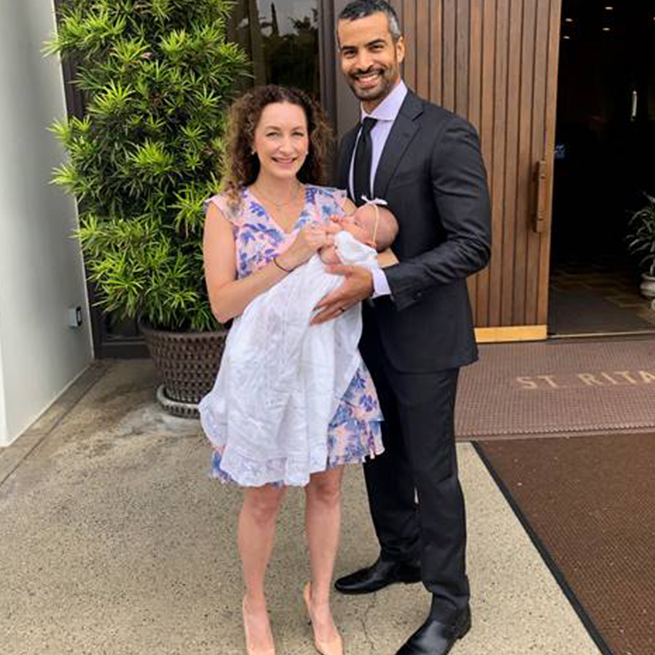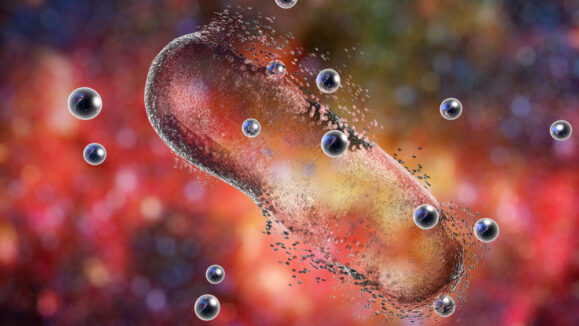Retinoblastoma (RB) is the most common type of ocular cancer in children, and a devastating diagnosis to have to deliver to any family. When a child’s eyes are developing, the retinoblasts (or immature (progenitor) cells) are rapidly dividing to create what will eventually become their retina. Every retinoblast has two copies of the retinoblastoma 1 (RB1) gene. If there is a mutation present in both copies of RB1, the retinoblast cells can grow and divide out of control, forming the tumor we recognize as RB. Despite overall survival rates for RB being approximately 90% in developed countries, preserving the child’s globe and vision still present critical challenges.
Typically, the way to manage solid tumors in the body begins with a direct biopsy, but historically, this has not been the practice with RB. Why not? Direct biopsy of the tumor or obtaining any ocular fluid for analysis was contraindicated for fear of causing tumor seeding (where malignant cells are deposited along the tract of the biopsy needle) and dissemination to other tissues. However, while it remains contraindicated to biopsy the RB tumor directly, advancements in therapeutic technique have permitted aqueous humor to be safely extracted from RB eyes undergoing therapy.
These tiny samples may hold the key to unlock a unique opportunity for enhanced diagnosis, prognosis and management of RB.
Dr. Jesse Berry and her colleagues in the United States agree and conducted a comprehensive review of aqueous humor marker research in RB, that was published in April 2019 in Translational Vison Science & Technology.1 Dr. Berry explains how RB management has changed: “Prior to 2012, it was completely contraindicated to place a needle into an eye with retinoblastoma unless it was enucleated. Francis Munier, MD, changed that paradigm in applying a new safety enhanced mechanism for delivering chemotherapy to the back of the eye.”
Munier and colleagues describe the conditions of the RB eye that must be met in order to ensure safety of the technique: (1) presence of clear medium, (2) absence of invasion of the anterior and posterior chamber on ultrasound biomicroscopy, (3) absence of tumor at planned entry site, (4) absence of vitreous seeds at entry site, and (5) the absence of retinal detachment at the entry site.2
Dr. Munier’s technique has led to the intravitreal injection of chemotherapy (melphalan and/or topotecan) for seeding in RB being widely accepted and the risk of extraocular spread is considered extremely low, with no reported cases since the implementation of the enhanced safety procedure. The aqueous humor paracentesis is part of the standard protocol for these intravitreal chemotherapy injections. A small volume, 0.1mL, of aqueous fluid is aspirated to induce transient hypotony prior to the intravitreal injection of chemotherapy, not for diagnostic purposes, but as a safety measure, to prevent reflux to the injection site.
Dr. Berry describes how aqueous samples had previously been handled as part of that procedure: “Once aqueous is removed from the eye in order to lower the pressure, it was initially tested for cells, which was routinely negative, and then after generally discarded as it had no other value to the procedure.” Dr. Berry and colleagues came up with the idea to test the fluid samples that would have been discarded for tumor DNA . . . which they found!
Dr. Berry shares how this discovery has changed the RB landscape: “Not only did this open up a whole new body of research in using the aqueous as a liquid biopsy for retinoblastoma but revived old research as well.
Previously, scientists had evaluated the aqueous for various clinical markers but because it could only be done AFTER enucleation, so the results had very little clinical value to the patient at that point. Now that it has been shown that aqueous is safe to extract in RB eyes, we can now revisit the clinical impact of this old research – thus, the point of the aqueous biomarkers paper.”
They searched, reviewed and summarized all studies that have explored markers in aqueous humor, hypothesizing that these investigations may hold valuable insight into how these biomarkers may correlate with features of the intraocular tumor and provide diagnostic and prognostic value. The key feature is that this analysis is now able to be performed in current patients, not just in enucleated eyes. This means that the work previously done, identifying biomarkers in those enucleated eyes, may now have application to current clinical patients and impact management and diagnosis.
Can a 0.1 mL sample be enough volume for analysis? Yes – in 2017 Dr. Berry and colleagues demonstrated that sufficient concentrations of RB tumor DNA was present and available for sequencing and analysis. This early work suggested that aqueous samples held the potential to be a surrogate to direct tumor biopsy when actual RB tumor tissue was not available, and may even be predictive of aggressive tumor activity, without eyes having to have been enucleated.3
Presently, outside of active research protocols, there are no commercially available clinical tests that are indicated for any type of diagnostic or prognostic evaluation of eyes with RB.
Dr. Berry’s important work continues, “We hope that as we continue to develop the aqueous as a liquid biopsy, these markers will have diagnostic and prognostic significance that make a real clinical impact on these children with retinoblastoma.”
References:
1 Ghiam BK, Xu L, Berry JL3. Aqueous Humor Markers in Retinoblastoma, a Review. Transl Vis Sci Technol. 2019;8(2):13.
2 Munier FL, Soliman S, Moulin AP, et al. Profiling safety of intravitreal injections for retinoblastoma using an anti-reflux procedure and sterilisation of the needle track. Br J Ophthalmol. 2012;96:1084-1087.3 Berry JL, Xu L, Murphree AL, Krishnan S, et al. Potential of aqueous humor as a surrogate tumor biopsy for retinoblastoma. JAMA Ophthalmol. 2017;135:1221-1230.




